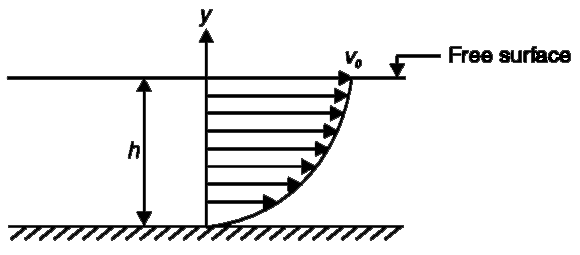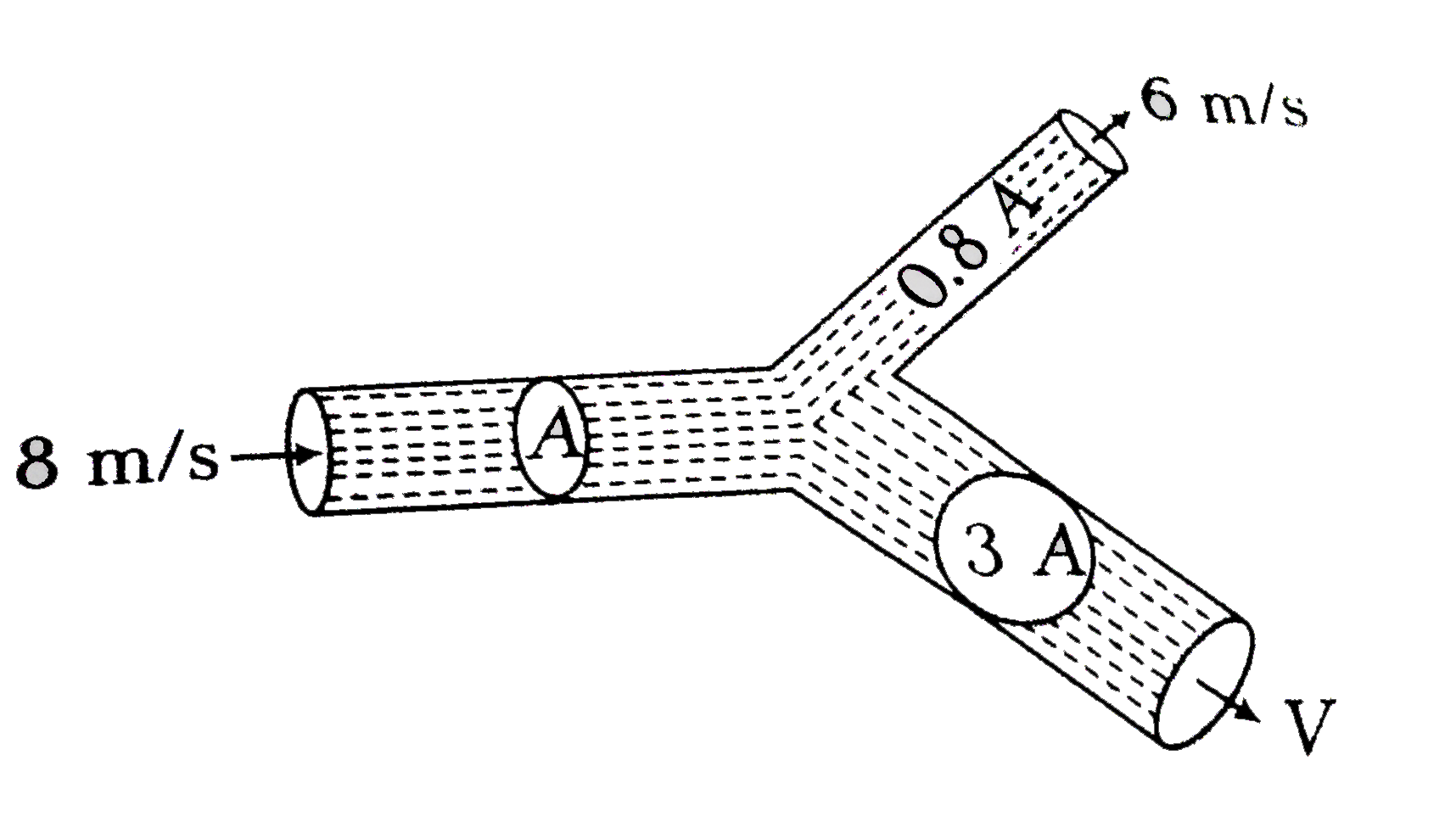A liquid is flowing through a horizontal channel. The speed of flow (v) depends on height (y) from the floor as v=v0[2(yh)−(yh)2]. Where h is the height of liquid in the channel and v0 is the speed of the top layer. Coefficient of viscosity is η. Then the shear stress that the liquid exerts on the floor is.
2ηv0h
3ηv0h
4ηv0h
2ηv03h
The correct Answer is:A
Shear stress is tangential force applied by the liquid on unit area of the floor:
Velocity gradient =dvdy=2v0h−2v0h2y
At y=0,dvdy=2v0h
∴ Viscous force per unit area =ηdvdy=2ηv0h
Similar Questions
A liquid is flowing through a horizontal channel. The speed of flow (v) depends on height (y) from the floor as v=v0[2(yh)−(yh)2].Where h is the height of liquid in the channel and v0 is the speed of the top layer. Coefficient of viscosity is η. Calculate the shear stress that the liquid exerts on the floor.

View SolutionA vertical steel rod has radius a. The rod has a coat of a liquid film on it. The liquid slides under gravity. It was found that the speed of liquid layer at radius r is given by
v=ρgb22ηln(ra)−ρg4η(r2−a2)
Where b is the outer radius of liquid film, η is coefficient of viscosity and ρ is density of the liquid.
(i) Calculate the force on unit length of the rod due to the viscous liquid?
(ii) Set up the integral to calculate the volume flow rate of the liquid down the rod. [you may not evaluate the integral]

View Solution
Knowledge Check
An incompressible liquid is flowing through a horizontal pipe as shown in figure. The value of speed v is
 A1.1ms−1B2.1ms−1C3.1ms−1D5.1ms−1
A1.1ms−1B2.1ms−1C3.1ms−1D5.1ms−1If V1 and V2D be the volumes of the liquids flowing out of the same tube in the same interval of time and η1 and η2 their coefficients of viscosity respectively then
Aη1η2=V2V1Bη1η2=V1V2Cη1η2=V21V22Dη1η2=V22V21A liquid flows through a horizontal tube. The velocities of the liquid in the two sections, which have areas of cross section A1 and A2 are v1 and v2 respectively. The difference in the levels of the liquid in the two vertical tubes is h. Then
 Athe volume of the liquid flowing through the tube in unit time is A1v1Bv2−v1=√2ghCv22−v21=2ghDthe energy per unit mass of the liquid is the same in both sections of the tube
Athe volume of the liquid flowing through the tube in unit time is A1v1Bv2−v1=√2ghCv22−v21=2ghDthe energy per unit mass of the liquid is the same in both sections of the tube
A tube of length 1 and radius R carries a steady flow of fluid whose density is ρ and viscosity η. The velocity v of flow is given by v=v0(1−r2/R2) Where r is the distance of flowing fluid from the axis.
View SolutionWhen a liquid flows in a tube, there is relative motion between adjacent layers of the liquid. This force is called the viscous force which tends to oppose the relative motion between the layers of the liquid. Newton was the first person to study the factors that govern the viscous force in a liquid. According to Newton’s law of viscous flow, the magnitude of the viscous force on a certain layer of a liquid is given by
F=−ηAdvdx
where A is the area of the layer dvdx is the velocity gradient at the layer and η is the coefficient of viscosity of the liquid.
A river is 5 m deep. The velocity of water on its surface is 2ms−1 If the coefficient of viscosity of water is 10−3Nsm−2 , the viscous force per unit area is :
View SolutionA body is thrown from a height h with speed, u it hits the ground with speed v
View SolutionA stone is dropped into a pond from the top of the tower of height h. If v is the speed of sound in air, then the sound of splash will be heard at the top of the tower after a time
View Solution
A container filled with viscous liquid is moving vertically downwards with constant speed 3v0. At the instant shown, a sphere of radius r is moving vertically downwards (in liquid) has speed v0. The coefficient of viscosity is η. There is no relative motion between the liquid and the container. Then at the shoen instant, The magnitude of viscous force acting on sphere is
View Solution